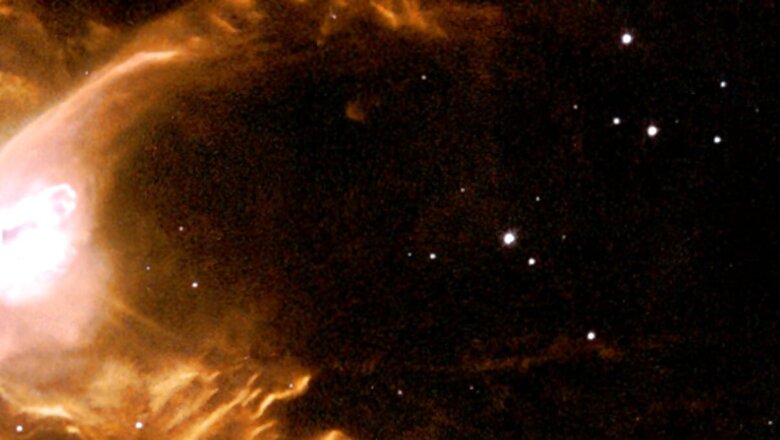
views
American space agency NASA dropped marvellous glimpses of Red Spider Nebula on their social media pages. This planetary nebula, formally known as NGC 6537, is situated in the constellation Sagittarius. It is about 3,000 light years from the Earth. This particular nebula is interesting as it seems to have a two-lobed structure formed by the impact of the companion star or magnetic fields.
The lobes have an S-shaped pattern, and their outer surfaces are rough and wavy rather than flat.
“Orange waves of hot gas, resembling the curved legs of a black widow spider, surround a pinkish glowing core in this image of a planetary nebula. The background is spotted with white points of light,” NASA wrote in the post shared on Instagram.
Regarding the Red Spider Nebula, the space agency explained that the nebula is home to one of the hottest stars and the pressure drives gas around it and creates shockwaves that are 100 billion km high. These waves look like spider-legs-like arcs in this picture, while the star looks like a black widow spider’s clutch at the center.
View this post on Instagram
The image has more than 6 lakh double taps on Instagram.
A user in the comments section described the image as “Celestial entanglement.”
Another user said, “Looks like trouble in paradise.”
“Best one so far”, said another user.
A user declared, “Alright, this is the most beautiful thing I saw today, thank you.”
Red Spider Nebula’s morphology is believed to be due to the furious stellar wind from the central star. These winds with a speed of approximately 300km/s compress the gas and heat it which results into the formation of large waves measuring a stunning 100 billion kilometre high.
These interactions send out shockwaves that make atoms in the gas glow and give the nebula its bright colours.
As for the Red Spider Nebula, it can be considered a 13th-magnitude object, and due to its small size and overall faintness, it is invisible without a telescope. Observed under clear and perfect conditions, it can be seen using small-sized telescopes but looks like a disc with rough margins rather than the image of a spider.




















Comments
0 comment